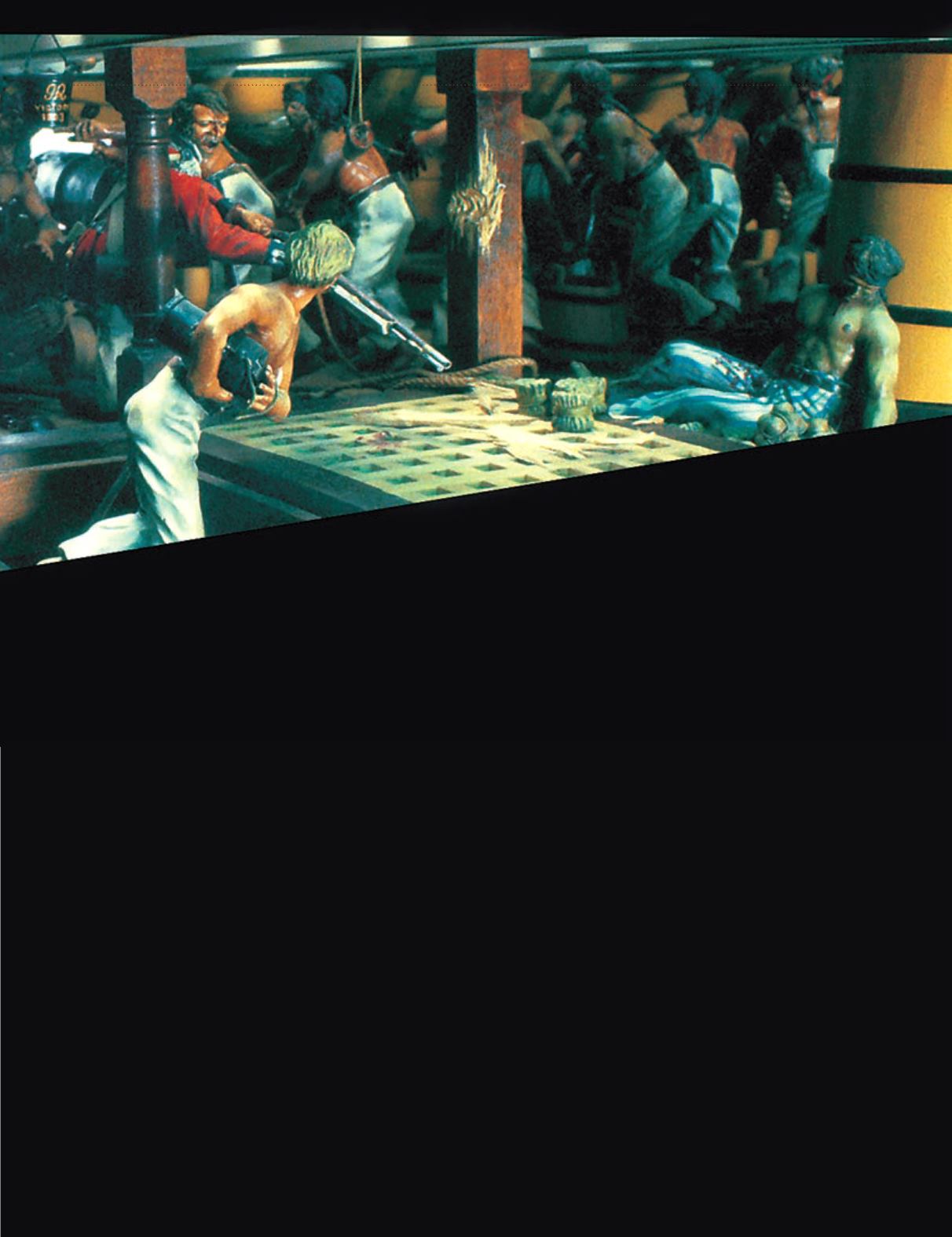
59
“It was the ideal college job because I could
make them when I wanted to make them.”
In his career in this niche field, Paine
has used his broad knowledge of military
history to create pieces for private col-
lections, museums, and other large insti-
tutions, including the Franklin Mint. His
models and figures reflect his interest in for
the Napoleonic era, the Civil War, World
War I, and World War II (not to mention
fantasia, including a scene from
The
Hobbit
, and from famous works of art).
Jim DeRogatis, a fellow modeler who
recently released a biography of Paine,
calls him “arguably the best-known
military miniaturist in the world….He has
done more than anyone else to elevate
modeling to the level of an art form,
one that includes elements of painting,
sculpting, historical research, and vivid
storytelling.” An online biography of
Paine describes him as a “champion of
the diorama” who has written numerous
how-to manuals – and a handful of books
– for modelers and fellow diorama
enthusiasts.
“Shep’s biggest talents as a miniaturist
are imagination and storytelling,” says
DeRogatis. “For sheer technique, others
have been better painters or sculptors.
But Shep has been able to draw the viewer
into his work in a way that no one else
ever has matched, via the power of the
stories he told, much like a great direc-
tor in the theater or cinema, and the
unique and distinctive touches – whim-
sical, poignant, humorous, or pure imag-
ination that could keep you endlessly
glued to his pieces.”
Two artists, according to DeRogatis,
who have come close to but never ex-
ceeded the acclaim Paine garnered in
the field are California miniaturist Bill
Horan and Swedish artist Mike Blank,
who has been at the top of the field for
the last decade, since Paine declared semi-
retirement from the pursuit.
“But Shep really has occupied a singular
position in the hobby,” DeRogatis says.
“Think Beatles, Rolling Stones, and Elvis,
all combined.”
Paine describes his own work as detail-
oriented, both because of the care with
which he studies the figures and his close
examination of the periods in which they
lived. His passion for research has allowed
him to be an archaeologist of sorts, dig-
ging through history to reproduce every-
thing from expression to stance to “trying
to figure out what these people would
have in their pockets.” For his model of
Rembrandt’s
Night Watch
, he incorpo-
rated missing figures, which had been
cut from the painting when framed. But
even though his topics are serious, he is
careful not to take his work
too
seriously.
“It has been fun,” he says. “But I don’t
take it too seriously. Like anything, when
you start getting involved in the detail
work, you can start losing sight of the
forest through the trees. I hope I have
never lost sight of the forest.”
The gun deck of HMS
Victory
at Trafalgar, 1805


